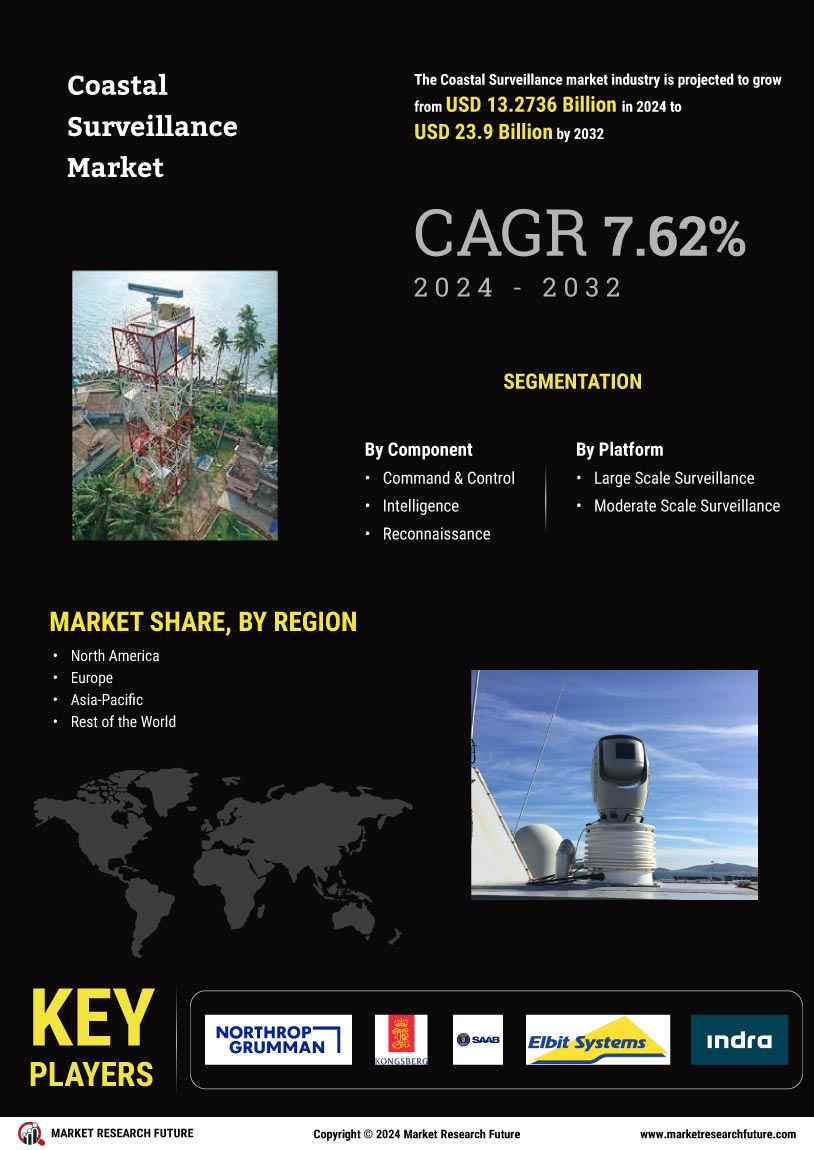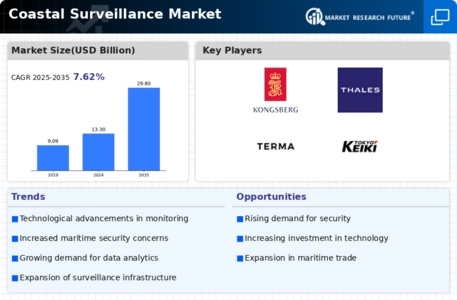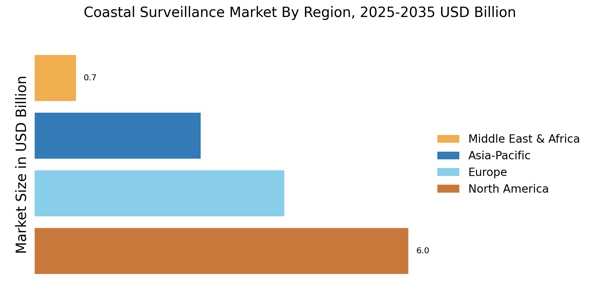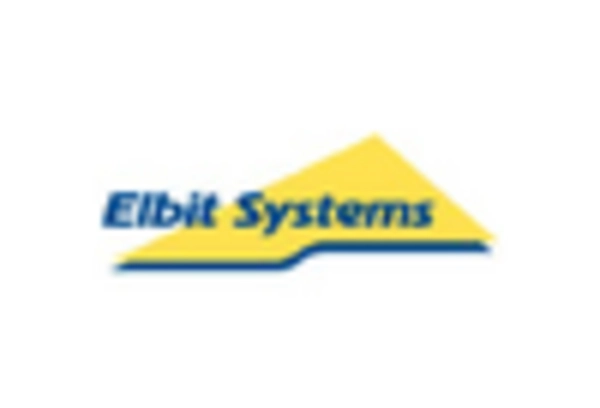Increasing Maritime Security Threats
The Coastal Surveillance Market is experiencing heightened demand due to increasing maritime security threats. Piracy, smuggling, and illegal fishing activities have surged, prompting nations to enhance their coastal surveillance capabilities. According to recent data, maritime security incidents have risen by over 30% in certain regions, necessitating advanced surveillance systems. Governments are investing in technologies such as radar, satellite imagery, and unmanned aerial vehicles to monitor coastal areas effectively. This trend indicates a growing recognition of the need for robust surveillance solutions to safeguard national interests and ensure maritime safety. As threats evolve, the Coastal Surveillance Market is likely to expand, driven by the imperative to protect vital maritime routes and resources.
Rising Investment in Defense and Security
The Coastal Surveillance Market is benefiting from rising investments in defense and security by various nations. Governments are increasingly recognizing the strategic importance of coastal areas and are allocating substantial budgets to enhance surveillance capabilities. Recent reports indicate that defense spending related to maritime security has increased by nearly 15% in several countries. This trend is likely to continue as nations prioritize the protection of their coastlines against potential threats. The influx of funding is expected to drive innovation and the development of advanced surveillance technologies, thereby expanding the Coastal Surveillance Market. As nations bolster their defense strategies, the demand for effective coastal surveillance solutions will likely rise.
Growing Awareness of Climate Change Impacts
The Coastal Surveillance Market is also influenced by the growing awareness of climate change impacts on coastal regions. Rising sea levels, increased storm frequency, and coastal erosion are prompting governments to invest in surveillance systems that monitor environmental changes. This awareness has led to a projected increase in market demand for technologies that can provide real-time data on coastal conditions. Recent studies suggest that over 70% of coastal nations are prioritizing surveillance initiatives to address climate-related challenges. This trend indicates a shift towards proactive measures in managing coastal environments, thereby driving growth in the Coastal Surveillance Market. As climate change continues to pose risks, the need for effective monitoring solutions will likely intensify.
Technological Innovations in Surveillance Systems
Technological innovations are reshaping the Coastal Surveillance Market, with advancements in sensor technologies, data analytics, and artificial intelligence playing pivotal roles. The integration of these technologies enhances the effectiveness of surveillance systems, enabling real-time monitoring and data processing. For example, the adoption of machine learning algorithms allows for the identification of suspicious activities with greater accuracy. Market data suggests that the demand for advanced surveillance solutions is expected to grow by approximately 25% over the next five years. This growth is indicative of the industry's response to the need for more sophisticated and efficient surveillance capabilities. As technology continues to evolve, the Coastal Surveillance Market is poised for substantial transformation.
Regulatory Compliance and Environmental Protection
The Coastal Surveillance Market is significantly influenced by regulatory compliance and environmental protection initiatives. Governments are increasingly mandated to monitor and manage coastal ecosystems, leading to a surge in demand for surveillance technologies. For instance, regulations aimed at protecting marine biodiversity and preventing pollution have prompted investments in monitoring systems. The market is projected to grow as authorities seek to ensure compliance with international environmental agreements. Recent statistics indicate that over 60% of coastal nations are enhancing their surveillance capabilities to meet these regulatory requirements. This trend underscores the importance of integrating environmental monitoring into coastal surveillance strategies, thereby driving growth in the Coastal Surveillance Market.


















Leave a Comment